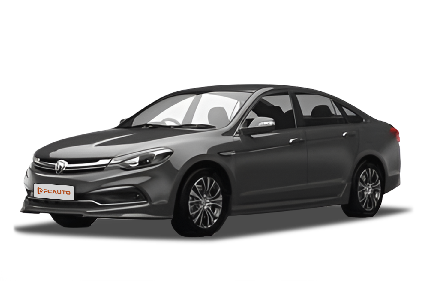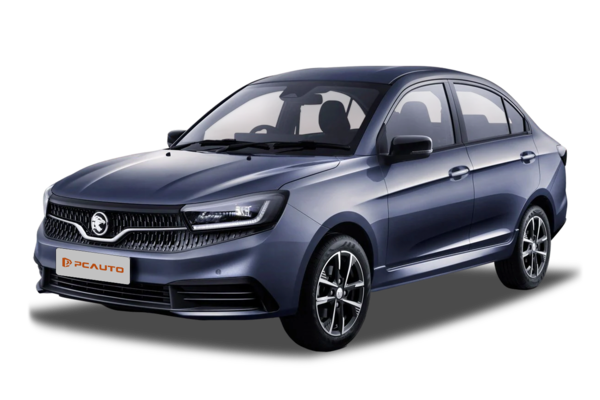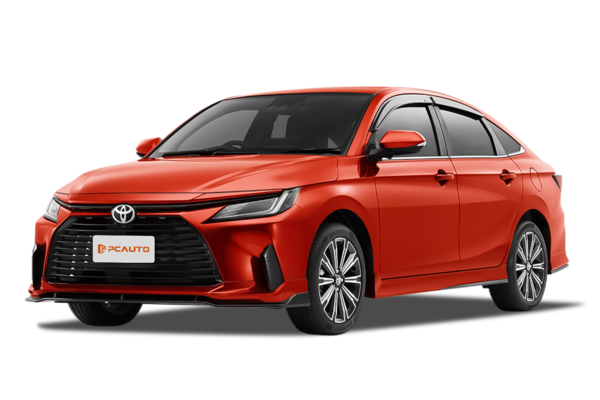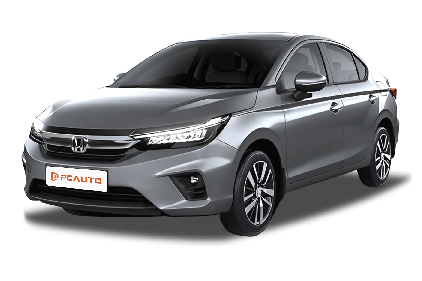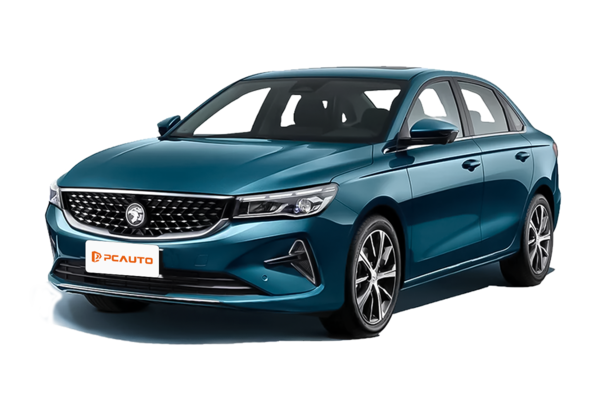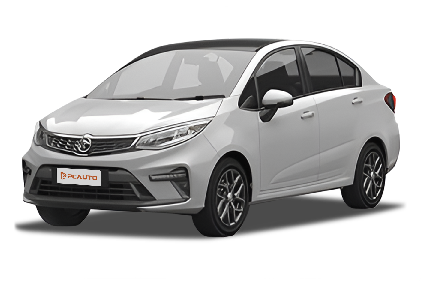Q
How much is S70 2024 in Malaysia?
Pricing details for the 2024 Volvo S70 haven't been officially announced yet, but looking at the current S60's price range (around RM250,000 to RM300,000) and the brand's recent pricing strategies, we can expect the S70 to start at roughly RM280,000, with higher-spec variants possibly approaching RM350,000. The new model is set to carry forward Volvo's family design language and will likely feature an upgraded plug-in hybrid system – the T8 Recharge version, for instance, might deliver over 400 horsepower combined. Standard tech should include the City Safety active safety suite and Pilot Assist semi-autonomous driving aids. It's worth noting that rivals like the BMW 3 Series and Mercedes-Benz C-Class have also rolled out mild-hybrid models lately. When comparing options, shoppers should pay attention to differences in hybrid tech approaches (like 48V mild hybrids versus plug-in hybrids) and after-sales warranty policies (some brands offer 5-year/unlimited mileage coverage). If you're interested, keep an eye on the upcoming Kuala Lumpur International Motor Show or reach out to authorized dealers directly to schedule a test drive – get hands-on with the Nordic luxury sedan's driving feel and signature features like those ergonomic seats.
Q
What is the spec of the Proton X70 2022?
The 2022 Proton X70, Malaysia's flagship homegrown SUV, offers two turbocharged petrol engine options: 1.5L TGDi and 1.8L TGDi. The 1.5L variant pumps out 177 hp and 255 Nm of torque, while the 1.8L ups the ante with 184 hp and 300 Nm. Both pair with a 7-speed dual-clutch transmission, and select models get an intelligent all-wheel-drive system.
Across the range, you'll find standard features like an 8-inch infotainment touchscreen with Apple CarPlay/Android Auto, keyless entry, and a power tailgate. Higher trims add extras such as a panoramic sunroof, NAVI navigation, and a premium sound system.
Safety is well-covered too, with 6 airbags, ESC stability control, 360-degree cameras, and automatic emergency braking (AEB) coming standard—ticking all the boxes for Malaysians after a high-value SUV.
What really stands out is the X70's intelligent AWD system, which automatically adjusts torque based on road conditions—pretty rare for this price bracket. Plus, connected car features like remote engine start and pre-cooling are total lifesavers in Malaysia's sweltering heat. These little touches show Proton gets local driving needs, keeping the X70 competitive in the B-segment SUV game.
Q
What engine is in the Proton Saga 2018?
The 2018 Proton Saga is powered by a 1.3-liter CamPro VVT naturally aspirated four-cylinder engine. This engine features Variable Valve Timing (VVT) technology, which optimizes intake efficiency at different engine speeds to boost fuel economy and performance. It delivers a maximum output of 94 horsepower and peak torque of 120 Nm, paired with either a 5-speed manual or 4-speed automatic transmission—perfect for city driving and daily commuting needs. As an entry-level sedan from Malaysia's homegrown brand, the Proton Saga has won over many family users with its affordability and reliability. While the engine isn't the most cutting-edge tech-wise, it excels in low maintenance costs and durability, making it well-suited for Malaysia's road conditions and climate. Developed in collaboration with Lotus Engineering, the CamPro engine series has undergone multiple upgrades, resulting in significant improvements in smoothness and fuel efficiency. For budget-conscious buyers seeking a dependable runabout, the 2018 Proton Saga is a solid pick.
Q
What is the fuel consumption of Proton Saga 2018?
The official fuel consumption figures for the 2018 Proton Saga are 5.6 to 6.0 liters per 100 kilometers (exact numbers vary based on driving conditions and transmission type). It's powered by a 1.3-liter VVT engine paired with either a 4-speed automatic or 5-speed manual gearbox. This budget-friendly sedan delivers a balanced performance in both city and highway driving, making it ideal for daily commutes.
Fuel efficiency is influenced by several factors, including driving habits, road conditions, and vehicle maintenance. To keep fuel economy at its best, it's a good idea to regularly check tire pressure and maintain the engine properly. As a homegrown Malaysian brand, Proton's Saga lineup has always been known for great value and low running costs. The 2018 model also got upgrades to its sound insulation and suspension system, which boosted ride comfort.
If you want to squeeze even more efficiency out of it, try accelerating smoothly, cutting down on sudden braking, and using the air conditioning wisely. These simple habits can help get your fuel consumption closer to those official numbers.
Q
What is the fuel consumption of the 2018 Holden Spark?
The 2018 Holden Spark is a budget-friendly city car that delivers fuel economy well-suited for Malaysian urban commuting. According to official figures, the manual transmission variant returns a combined fuel consumption of around 5.4L/100km, while the automatic version is slightly higher at approximately 5.8L/100km. Real-world fuel usage may vary slightly depending on driving habits, road conditions, and air conditioning usage. Powering this car is a 1.4-liter four-cylinder engine, offering smooth performance and low maintenance costs—ideal for budget-conscious young drivers or as a second family car. Given Malaysia's hot climate, regular maintenance of the fuel system and cabin air filter is recommended to maintain optimal fuel efficiency. Additionally, RON95 petrol is sufficient for this vehicle; there's no need for higher-octane fuel. For consumers prioritizing fuel efficiency, other models in the same segment like the Perodua Axia or Proton Saga are also worth considering, as they’re equally known for their economical nature. However, the final choice should come down to personal preference and test drive experience.
Q
How much horsepower does the X50 Turbo have?
The Proton X50 Turbo is powered by a 1.5-liter three-cylinder turbocharged engine that cranks out 177 horsepower and a peak torque of 255 Nm. This engine features direct fuel injection and is mated to a 7-speed dual-clutch transmission, delivering pretty impressive performance—especially suited for Malaysian city driving and highway overtaking needs. What's worth noting is that the X50 Turbo's engine is tuned to emphasize low-end torque, so you get that nice, punchy power response in everyday driving, and it's relatively fuel-efficient too. For Malaysian buyers, the X50 Turbo's powertrain setup is pretty competitive in its SUV class, and with local assembly, the price becomes even more appealing. If you're craving more performance, keep an eye on the X50 Flagship variant, which bumps the horsepower up to 181 and comes with a fancier suite of driver assistance systems. Malaysia's hilly terrain and hot climate really put a car's powertrain to the test, but the X50 Turbo's cooling system and transmission tuning have been optimized for these conditions, ensuring reliable long-term use.
Q
How much is Proton X50 in Singapore?
The Proton X50 retails for around SGD 100,000 to SGD 120,000 in Singapore, with the exact price depending on the trim level and dealer promotions. Thanks to Singapore's high car import taxes and Certificate of Entitlement (COE) costs, it's significantly pricier than in Malaysia. For Malaysian buyers, the X50 goes for about MYR 80,000 to MYR 110,000 locally, offering much better value for money.
Under the hood, it's packing a 1.5-liter turbocharged engine that delivers solid power and fuel efficiency—perfect for city driving. If you're planning to buy one in Singapore, make sure to look into the local COE policies and loan options first, since these can really impact the total cost.
Plus, the Proton X50 has a solid reputation in Southeast Asia, especially when it comes to safety features and tech. Definitely worth checking out.
Q
What is the engine of Proton X50?
The Proton X50 is powered by a 1.5-liter turbocharged direct-injection (TGDI) three-cylinder engine, co-developed by Proton and Geely. This engine comes in two tuning versions: the standard variant delivers 150 horsepower and 225 Nm of torque, while the Flagship trim ups the ante to 177 horsepower and 255 Nm. It's mated to a 7-speed dual-clutch transmission (DCT), striking a balance between performance and fuel efficiency.
Under the hood, the engine borrows technology from Geely's BMA modular platform, featuring lightweight construction and direct fuel injection. These advancements help keep fuel consumption in check and ensure compliance with Malaysia's stringent EURO 4 emission standards. A notable point is that Proton has tweaked the engine specifically for local conditions – think a cooling system and ECU calibration optimized to handle our hot and humid weather. Plus, owners can run it on RON 95 petrol, which helps keep day-to-day running costs down.
For Malaysian buyers, small-displacement turbo engines like this have been gaining traction as the market favorite in recent years. Compared to traditional naturally aspirated engines, they deliver more torque at lower revs, making them well-suited for city driving. While three-cylinder setups do involve a slight trade-off in terms of smoothness, the use of a balance shaft has significantly reduced vibration issues. What's more, maintenance costs are on par with those of four-cylinder engines.
Q
Will the X50 facelift have a new engine?
As for whether the facelifted X50 will get a new engine, there's no official word yet. But looking at Proton's usual update strategy, facelifts typically focus more on tweaks to the exterior, interior, and features. The engine is likely to stay the same: the existing 1.5T three-cylinder turbo setup. It's proven itself reliable in the Malaysian market, and with its fuel efficiency plus 147hp/226Nm output, it fits the B-segment SUV bill. If you're craving more power, keep an eye out—Proton might roll out a high-performance variant or a hybrid model down the line. After all, the global trend is going electric, and local brands are also ramping up their new energy tech game. Best bet is to check Proton's official website or local Malaysian auto media for the latest scoop. And a quick tip for car buyers: beyond just power figures, factor in real-world stuff like maintenance costs and after-sales network. At the end of the day, the long-term ownership experience is what really matters.
Q
Which country made Proton X50?
The Proton X50 is a compact SUV co-developed and produced by Malaysian national automaker Proton and China's Geely. Its manufacturing base is located in Tanjung Malim, Perak, Malaysia. Based on Geely's Binyue platform, the model has undergone several localized adaptations for the Malaysian market, including right-hand drive configuration, safety features compliant with local regulations, and an air conditioning system tailored for tropical climates. The Proton X50 is powered by a 1.5-liter turbocharged engine and offers multiple driving modes, balancing performance with fuel efficiency. As a key strategic model for the Proton brand, the X50 has gained popularity among Malaysian consumers thanks to its high value for money and rich technological configuration, such as the advanced driver assistance system (ADAS) and smart connectivity features, further solidifying Proton's competitiveness in the local market. Notably, the collaboration between Proton and Geely has not only enhanced the technical content of the X50 but also driven the upgrading of Malaysia's automotive industry chain, with increasing local production ratios creating more job opportunities and facilitating technology transfer locally.
